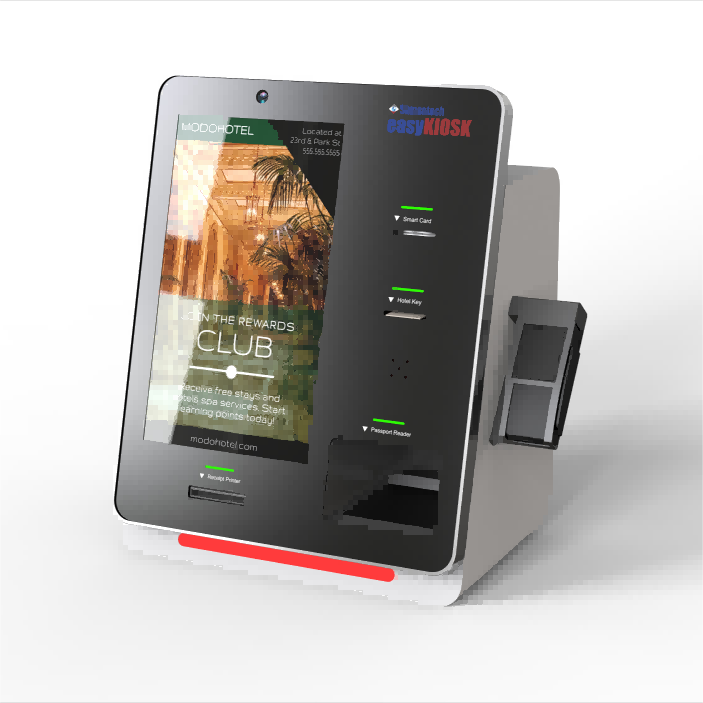
Customizing kiosk hardware involves tailoring various aspects of the kiosk's design and functionality to meet specific requirements and enhance user experience. Here are some common customization options:
1. Enclosure Design: Customize the kiosk enclosure's shape, size, material (e.g., metal, plastic, fiberglass), and color to fit aesthetic preferences and branding requirements. Consider features like branding decals, logos, or custom finishes (e.g., matte, glossy).
2. Mounting Options: Depending on the deployment environment, choose from different mounting options such as freestanding, wall-mounted, countertop, or floor-standing kiosks. Ensure stability and accessibility based on user height and reach.
3. Touchscreen Customization: Tailor the touchscreen size, resolution, and type (e.g., capacitive, resistive) to optimize usability for specific applications. Consider adding anti-glare or anti-fingerprint coatings to improve visibility and user interaction in various lighting conditions.
4. Peripheral Integration: Customize the integration of peripherals such as card readers (credit cards, IDs), barcode scanners, receipt printers, biometric readers (e.g., fingerprint scanners), cameras, or additional input devices based on the kiosk's functionalities.
5. Branding and Graphics: Incorporate branding elements through custom graphics, logos, or signage on the kiosk enclosure and touchscreen interface. Ensure consistency with corporate branding guidelines for a cohesive look.
6. Accessibility Features: Design kiosks with accessibility in mind, including options such as adjustable height for wheelchair accessibility, tactile buttons for visually impaired users, or voice-guided navigation for users with disabilities.
7. Power and Connectivity Options: Customize power supply options (e.g., standard AC, DC power, battery backup) and connectivity features (Ethernet, Wi-Fi, Bluetooth) based on the deployment location and operational needs, ensuring reliable connectivity and power management.
8. Security Enhancements: Implement additional security features such as reinforced enclosures, security locks, tamper-proof screws, encrypted data transmission, and software security updates to protect against vandalism, theft, or unauthorized access.
9. Environmental Considerations: Customize kiosk components to withstand environmental factors such as temperature variations, humidity, dust, and water resistance if deployed outdoors or in challenging environments.
10. User Interface (UI) Design: Customize the user interface (UI) and user experience (UX) design to align with specific user demographics, language preferences, and interaction patterns. Consider touch gestures, intuitive navigation, and multilingual support for global deployments.
11. Remote Management and Monitoring: Integrate remote management capabilities for monitoring kiosk performance, collecting usage analytics, and remotely updating software or content to ensure optimal operation and user satisfaction.
12. Compliance and Certification: Ensure compliance with industry standards, regulations (e.g., ADA accessibility guidelines, electrical safety certifications), and data privacy laws relevant to the kiosk's deployment location.
By leveraging these customization options, businesses can create tailored kiosk solutions that enhance brand visibility, improve user satisfaction, and meet specific operational requirements in various industries such as retail, healthcare, transportation, and hospitality.